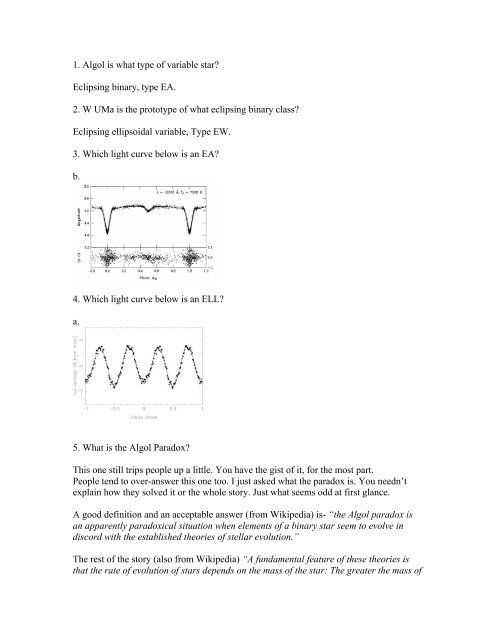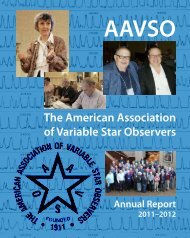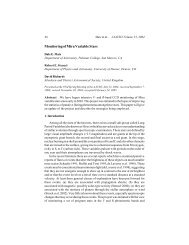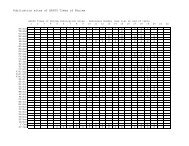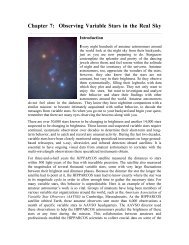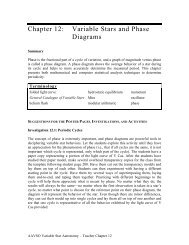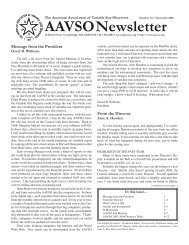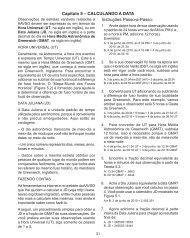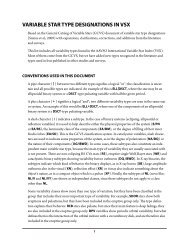You also want an ePaper? Increase the reach of your titles
YUMPU automatically turns print PDFs into web optimized ePapers that Google loves.
the star, the faster this evolution, and the more quickly it leaves the main-sequence,entering either a subgiant or giant phase.In the case of Algol and other binary stars we can observe something completelydifferent: The less massive star is already a subgiant, and the star with much greatermass is still on the main-sequence. Initially, this seems paradoxical as the partner starsof the binary are thought to have formed at approximately the same time and so shouldhave similar ages. Thus the more massive star, rather than the less massive one, shouldhave left the main sequence.The paradox is resolved by the fact that in many binary stars, there can be a flow ofmaterial between the two stars, disturbing the normal process of stellar evolution. As theflow progresses, the evolutionary stage of the stars will advance, even as the relativemasses change. Eventually, the originally more massive star will reach the next stage inits evolution despite having lost much of its mass to its companion.”(Say what you will about Wikipedia, but sometimes they simply nail it to the wall.)6. BY Dra stars are-c. can be either7. The orbital period of an eclipsing binary is the time interval:c. between primary eclipse minima8. Beta Lyrae variables are:b. semi-detached binaries9. What causes the light variation of an EP star?It dims when it is eclipsed by one or more of its planets.10. Which type of eclipsing binary contains ellipsoidal components nearly in contact asthey orbit a common center of mass?EW (W Ursae Majoris stars)11. What kind of eclipsing variable do you think this is an illustration of?
EW (W Ursae Majoris stars)12. What type of variable star is this? Explain your answer.EP (exoplanet transit) The change in flux is very small (milli-mags), the maximummagnitude of the star is constant, and there is no secondary eclipse. The roundedshape of the eclipse light curve is due to limb darkening on the star.


